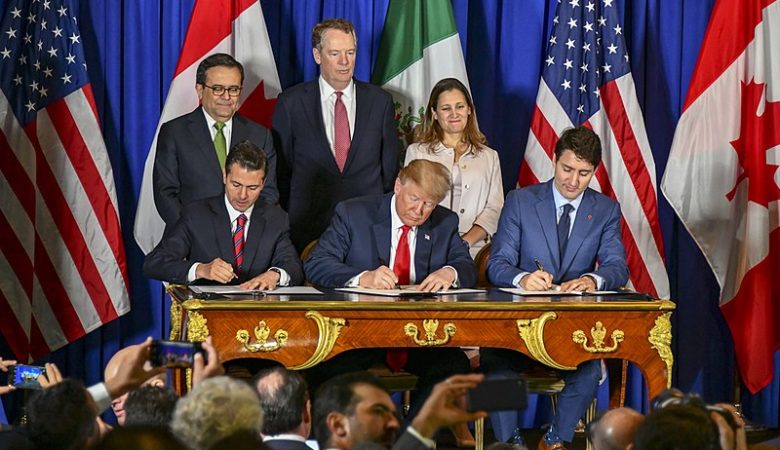USMCA Takes Hold with Promises of Economic Growth and IP Protections
On July 1, the United States Canada and Mexico Agreement (USMCA) took effect, replacing the previous North American Free Trade Agreement. This new agreement includes provisions that update digital trade and intellectual property rights and increase trade facilitation that ease the flow of goods and services.
In a report released by the U.S. International Trade Commission (USITC) that assessed the likely impact of the USMCA, the Commission’s model estimates the agreement would raise US real GDP by $68.2 billion and US employment by 176,000 with its implementation. The report also predicts that US exports to Canada and Mexico will increase by $19.1 billion and $14.2 billion as well as imports increasing by $19.1 billion and $12.4 billion, respectively.
Specifically, the manufacturing sector will have the largest percentage gains with a 0.57% increase in output, a 3.3% increase in exports, a 0.50% increase in real wages and a 0.37% increase in employment. Yet, the services sector will experience its largest gains with a .17% increase in output and a .09% increase in employment. These numbers estimate that USMCA will likely have a positive impact on US trade, with Canada and Mexico, as well as the rest of the world.
During negotiations, Property Rights Alliance called for a commitment to free trade and the strengthening of intellectual property rights as IP-intensive goods and services are a large part of U.S. trade with Canada and Mexico. The new USMCA achieves notable updates to NAFTA’s provisions on intellectual property, for instance, there is a new requirement to adjust patent terms for unreasonable delays in the patent examination and regulatory approval processes.
One setback occurred when, after the U.S., Canada, and Mexico signed the agreement on November 30, 2018, House Democrats struck the down provision calling for 10 years of data protection for new biologics drugs. The measure increased IP protections for biologics in Canada and Mexico, and was expected to increase jobs and investment in the highly innovative sector. The change, along with new labor and environmental restrictions, required the agreement to be signed a second time, which occurred in December 2019.
One clear trade liberalizing provision is a new chapter on trade facilitation that helps reduce the costs of burdensome logistics regulations. It mandates that all countries provide a free, publicly accessible website with information on procedures, documentation, regulations, web links, advanced notice of rules, and enquiry points for traders to communicate with customs officials. It also mandates a single-window system for each country to allow electronic submissions of documents and advanced filing. These streamlined processes reduce the uncertainty and complexity that deter small businesses from accessing international markets.
With these new provisions and other trade facilitation measures, the USMCA has taken active steps to reduce red tape in foreign trade and expand the rights of producers and consumers globally.

